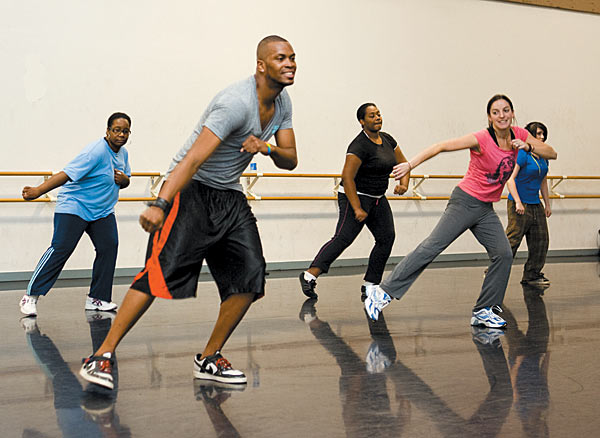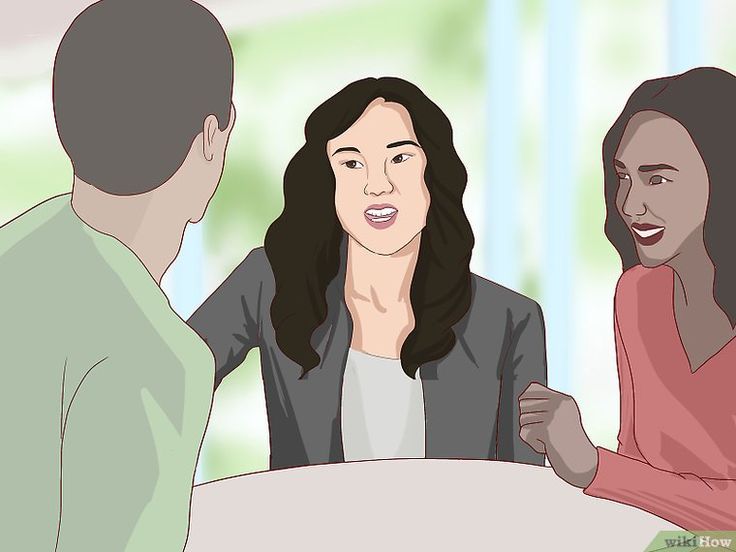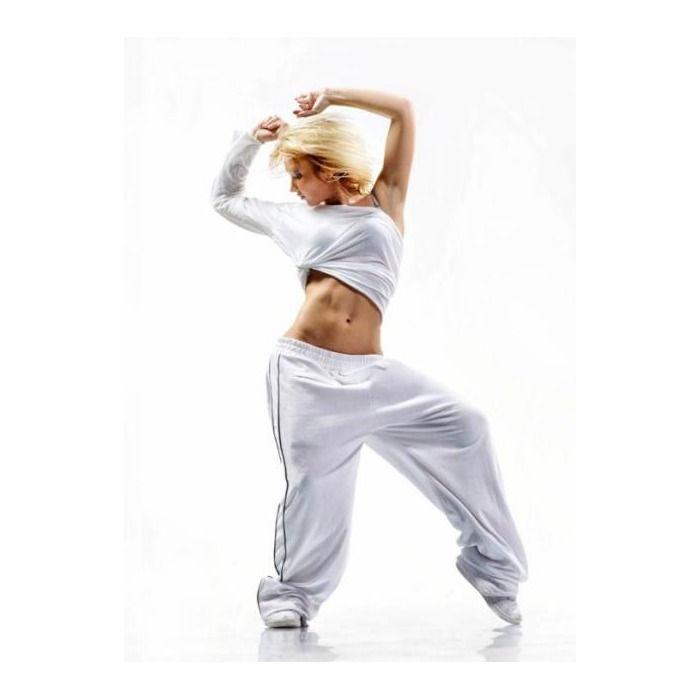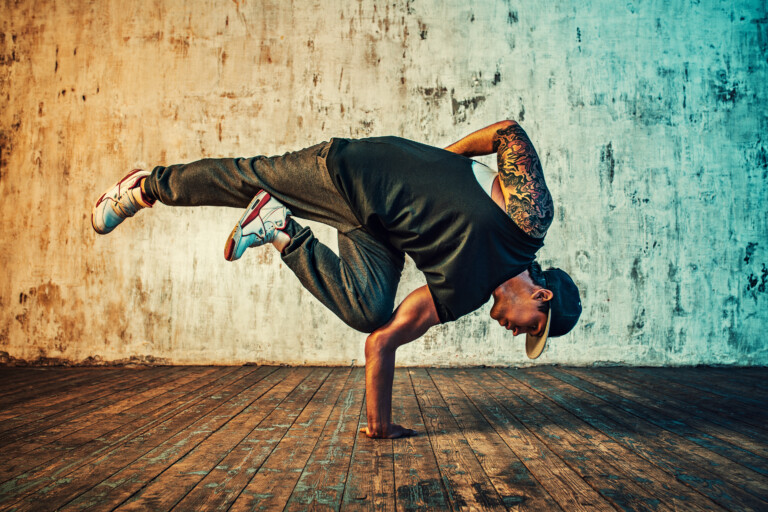How to freeze dance
The Right Way to Play Freeze Dance in the Classroom
I'm going to go ahead and claim it: I am the master of freeze dance in the classroom. After running the game with my students from preschool through 9th grade over many years of teaching, I have figured out what rules and procedures help the game run most smoothly and keep everyone having the most fun. Ready to learn all the tricks of the trade?
The biggest key to success is setting up the rules before you start. Here are the rules I always tell students when we play freeze dance / musical statues:
- When the music is playing you dance. When the music stops you freeze. The last one moving is out of the game and must go to a designated area.
- Throughout the game, whether the music is on or off, whether you are out or still playing, your voice must be off. It's not fair if someone else can't hear the music stopping because of your noise.
- For your movement to count as "dancing" you must move your feet and only your feet may touch the floor. Otherwise it's too easy to stop and start.
- You cannot touch any other person or thing, and you must stay in your spot- you cannot move around the room while you are dancing. It's not safe.
- If you forget any of the rules above, you will be out in addition to whomever is the last to stop moving- there can be multiple people out in one round.
- I am the Almighty Judge. You may not argue with the Almighty Judge, and you may not attempt to become a judge yourself. Any attempts to usurp or argue with Almighty Judge will result in banishment.
Once the rules are established the rest is a matter of holding students to those rules. I have found the best way to see a room full of dancing children simultaneously is to look at the middle of the room and pay attention to my peripheral vision. Make sure to position yourself in a place where you can control the music and see every player at the same time.
Besides the rules above, there are a few other things I do without telling the students that help prevent tantrums:
- I don't tell them in advance, but the first round is always a "practice round". I keep track of everyone who is breaking the rules- usually the shy kids who aren't moving, and the excited ones who are talking or laughing- and when I stop the music the first time I call out all the people who would have been out if it was the real deal. I tell them this is their warning and then remind them that from now on, if I call their name, they are out.
- I make the first *actual* round of dancing the longest- I don't want the first person to be out after just a few seconds! And the second round is always the shortest, so that the first person isn't out on their own for very long. The rest of the rounds I keep relatively short, but varying the length of course.
- After the first few rounds, if the students aren't too rowdy, I actually encourage those that are out to dance silently in their seats while they watch.
 It allows them to continue enjoying the music instead of feeling like they're missing out. It's important to keep them seated though, so you don't get confused while you're judging!
It allows them to continue enjoying the music instead of feeling like they're missing out. It's important to keep them seated though, so you don't get confused while you're judging! - There are always a handful of students who figure out ways to "dance" with the least movement possible. I allow anything (as long as they're moving their feet) for the first few rounds, but after that I'll start pressuring them into changing up their moves by telling them not to be "boring". If they continue to barely move, I'll sometimes tell them that if they don't start moving more I'll decide they're out.
- I keep a CD with lots of upbeat dance songs (find some of my favorites here) in my sound system at all times for this purpose. I like to change the song each round rather than playing and pausing the same one over and over- different students are more comfortable dancing with different types of music so I try to include a variety.
- I model "laughing it off" for students- if they lose their balance I will wink at them, sigh, or otherwise try to make light of the situation in a fun way, like "oops, guess that just happened" as I call their name.
 I find that helps, especially for those that tend to have trouble with losing, to "save face" in front of their peers.
I find that helps, especially for those that tend to have trouble with losing, to "save face" in front of their peers.
Now that you know all of my top-secret strategies for running Freeze Dance successfully in the classroom, it's time to get dancing! Be sure to check out the link above for some modern, upbeat music you can use in class for games like this.
Want more timely and relevant ideas like this sent straight to your inbox? Sign up here for the Organized Chaos newsletter!
Have Fun and Explore Mindful Movement with Freeze Dance
Inspiration Argos Gonzalez
The end of the school year is a perfect time to celebrate, have fun, and practice mindfulness. One way to do this by playing this mindful version of freeze dance.
Step 1: Create your music playlistCreate a playlist of your kids’ favorite songs and choose easy to dance music to get your kids moving. You can also have a variety of music to play songs your kids are not familiar with. Make sure to listen to the whole song so you know it’s appropriate! You can use a small speaker or computer to play the songs – just make sure it’s loud enough.
Make sure to listen to the whole song so you know it’s appropriate! You can use a small speaker or computer to play the songs – just make sure it’s loud enough.
Let students know you are going to be mindful of movement by playing freeze dance. Everyone will dance or move when the music starts and freeze when it stops. In between songs there will be prompts.
Let students know they have the option of walking or moving in a way that feels right for them. Remind students to be safe and be mindful of each other.
Step 3: Play the activityA key part to making this a mindful activity is asking purposeful questions to help your students bring kind awareness to the experience. Being strategic about the music you play and for how long you play it is also important.
Below are instructions and sample prompts you might want to ask.
Instructions
Before hitting play, check in with students. Ask what thoughts or feelings they’re having around participating. Explain that for some, this is a chance to show off some moves but for others, this activity is challenging. Explain part of the game is to notice what they feel.
Ask what thoughts or feelings they’re having around participating. Explain that for some, this is a chance to show off some moves but for others, this activity is challenging. Explain part of the game is to notice what they feel.
- Start the music and get your kids moving!
- Stop the music and freeze.
- Ask them to reflect about their experience.
- No one is eliminated, as the intention is to bring kind awareness.
Sample prompts:
- Ask students to reflect on the sensation of moving and being still.
- Prompt your students to freeze or move their bodies in a way that reflects how the song feels to them.
- Prompt students to freeze like the shape of a letter, an animal, or a superhero
- Ask students to dance in certain ways—like a ballerina, a famous artist, or an animal.
Step 4: Debrief on the activity
Ask about how they felt at the beginning of the activity, and how they feel after it was completed. Get their thoughts on how they felt when they heard a song they were not familiar with or didn’t like.
Get their thoughts on how they felt when they heard a song they were not familiar with or didn’t like.
Overall, encourage students to share what they liked about the activity and what they found difficult about the activity. Validate all their experiences!
Lead your students through this Freeze Dance activity and ask them how they liked it. What success, challenges, and opportunities did your students share? Share with fellow teachers in your school or on social media with #mindfulschools.
We will dance
We will dance- 12/22/2016
“We will dance until we stop HIV”
On the movement for life – coordinator of the “Dance4Life” project in the Sverdlovsk region, specialist of the Sverdlovsk Regional AIDS Center Alexandra Shishmintseva
“Tell me and I will forget. Show me and maybe I'll remember. Let me do it and I'll know!" - slightly paraphrased and eternally relevant Confucius in his ancient times, of course, did not think that his conclusion would become the official slogan of the international youth movement aimed at preventing HIV infection. Talking, showing and engaging are the main principles of the global preventive "disco" called "Dance4Life", started by two Africans Peter and Oliver in the Netherlands back in 2004. In the Sverdlovsk Region, the project was launched in September 2014 at the initiative of the Regional AIDS Center and the Sverdlovsk Regional Medical College. Alexandra Shishmantseva, an AIDS center specialist and chairman of the volunteer teams of the Verkh-Isetsky district of Yekaterinburg, became the coordinator of the project, its "motor" and "locomotive".
Talking, showing and engaging are the main principles of the global preventive "disco" called "Dance4Life", started by two Africans Peter and Oliver in the Netherlands back in 2004. In the Sverdlovsk Region, the project was launched in September 2014 at the initiative of the Regional AIDS Center and the Sverdlovsk Regional Medical College. Alexandra Shishmantseva, an AIDS center specialist and chairman of the volunteer teams of the Verkh-Isetsky district of Yekaterinburg, became the coordinator of the project, its "motor" and "locomotive".
- When and why did you decide to do this project?
- I got excited about this project a long time ago. Back in 2007, at a summer volunteering school in Barnaul, I met guys from Moscow who brought Dance4Life to Russia and oversaw its promotion in our country. Even then, I tried to negotiate with them that the project would be implemented in the Urals as well. Then it all came down to money. Arrival and accommodation of trainers, rent of the hall, lunches and coffee breaks for the participants… As a result, we returned to the conversation only in 2014.![]() The negotiations alone took six months. And in September 2014, near the Megapolis shopping center, where a mobile point for express testing was deployed, we organized the first flash mob. Today, about a thousand children have passed through the project in our region - these are participants in the classes organized by Dance4Life for peers. In total, in the 11 years that the movement has existed in our country, 11,000 volunteers have mastered the dance for the sake of life. This means we are 11 thousand!
The negotiations alone took six months. And in September 2014, near the Megapolis shopping center, where a mobile point for express testing was deployed, we organized the first flash mob. Today, about a thousand children have passed through the project in our region - these are participants in the classes organized by Dance4Life for peers. In total, in the 11 years that the movement has existed in our country, 11,000 volunteers have mastered the dance for the sake of life. This means we are 11 thousand!
- You have to understand that it's not just a dance, it's a certain message to the world? Lifestyle?
- Not just a message. It's a whole system. Prevention first and foremost. And the value system. The project is conditionally divided into four stages. We call the first of them launch (in December we launch several groups at once, each can have from 5 to 20 people). These are preventive classes in an interactive form, acquaintance with the ideology of Dance4Life and the situation with the spread of HIV. We gather active and caring children, learn a dance-message with them (phrases are "encoded" in the movements - "Let's stop AIDS", "I can give reliable information about HIV", "I can freeze AIDS"). Dance is very important. They are involved in this whole story with their bodies, thanks to which a lot of barriers are removed. That is why another name for this stage is “Get inspired!”. All this is done by volunteers who speak the same language with students of educational institutions, because they are their peers. One of the main principles of the movement is that an equal teaches an equal.
We gather active and caring children, learn a dance-message with them (phrases are "encoded" in the movements - "Let's stop AIDS", "I can give reliable information about HIV", "I can freeze AIDS"). Dance is very important. They are involved in this whole story with their bodies, thanks to which a lot of barriers are removed. That is why another name for this stage is “Get inspired!”. All this is done by volunteers who speak the same language with students of educational institutions, because they are their peers. One of the main principles of the movement is that an equal teaches an equal.
- This is only the first stage. So?
- The second stage is called "Learn". This is a set of trainings for teenagers, where volunteers discuss issues of gender relations, sexually transmitted infections, HIV problems, contraceptive methods. In a word, in a broader sense, this project immediately solves a tangle of problems and teaches teenagers safe behavior, maintaining reproductive health, and talks to them about responsible parenthood. Indeed, at school they practically do not talk about this, and if they do, it is very vague and vague. Meanwhile, the situation in our region is such that we should not just talk about it, we should shout. And according to the newly identified cases of HIV infection, it becomes obvious that the sexual route of transmission of the virus comes to the fore, so such a project is very important for us. The third stage is called "Act": trained volunteers carry out actions on the streets, all kinds of flash mobs, information campaigns. As a rule, actions are held next to a mobile point for express testing (connection with testing is a feature of the project in our region) and are often tied to four dates - this is the day of the fight against AIDS on December 1, the day of remembrance of those who died from AIDS (the third Sunday May), as well as February 14, Valentine's Day and Contraception Day. After that, the final, fourth stage remains - “Celebrate!”. The final event is our gratitude to the volunteer activists, we bring everyone together.
Indeed, at school they practically do not talk about this, and if they do, it is very vague and vague. Meanwhile, the situation in our region is such that we should not just talk about it, we should shout. And according to the newly identified cases of HIV infection, it becomes obvious that the sexual route of transmission of the virus comes to the fore, so such a project is very important for us. The third stage is called "Act": trained volunteers carry out actions on the streets, all kinds of flash mobs, information campaigns. As a rule, actions are held next to a mobile point for express testing (connection with testing is a feature of the project in our region) and are often tied to four dates - this is the day of the fight against AIDS on December 1, the day of remembrance of those who died from AIDS (the third Sunday May), as well as February 14, Valentine's Day and Contraception Day. After that, the final, fourth stage remains - “Celebrate!”. The final event is our gratitude to the volunteer activists, we bring everyone together. To celebrate the achievements of the guys. Previously, everyone gathered in one city, in Moscow, in Rostov, for such a global all-Russian party. The financial situation has changed somewhat, but the federal scope has remained - it can be the creation of a single video for the whole country or a general photo session. This is a very important moment, the guys feel unity, belonging to something big, they understand their importance.
To celebrate the achievements of the guys. Previously, everyone gathered in one city, in Moscow, in Rostov, for such a global all-Russian party. The financial situation has changed somewhat, but the federal scope has remained - it can be the creation of a single video for the whole country or a general photo session. This is a very important moment, the guys feel unity, belonging to something big, they understand their importance.
- And what happens to the volunteers after this “graduation”, how does their life turn out?
- Someone decides to link their future life with the topic of HIV prevention and stays in the project at a different level, becomes a movement coordinator, but these are, of course, few. Most, of course, leave. But a completely different person. All children receive the status of "man of change". They return to their social environment, where they continue to lead a healthy lifestyle and transmit the acquired knowledge.
Is the project only for young people? And the older generation, preventive dances for those over 30 - is there such a thing?
No, young people under 25, maximum 30, become members of the movement. We work with parents through children, invite them to meetings, tell them how to start that very conversation with a child, convince them that this is important not for them, but for the preservation of the health of their children. Although, of course, according to statistics, we see that HIV is growing up and leaving just there, in the socially prosperous strata of the adult population.
We work with parents through children, invite them to meetings, tell them how to start that very conversation with a child, convince them that this is important not for them, but for the preservation of the health of their children. Although, of course, according to statistics, we see that HIV is growing up and leaving just there, in the socially prosperous strata of the adult population.
In most Russian regions, the project is supervised by NGOs, which often face skepticism. What is the attitude towards the Dance4Life project in our country today?
Today we are already recognized. I will tell such a story. We communicate in a special chat with movement coordinators from all over Russia, and one of the coordinators from the regions recently told how she came to print information materials for the Dance4Life campaign, she was wearing our branded clothes, and she was recognized by this brand and everyone printed out free of charge, they did not take money from her. Meanwhile, these various brochures, as well as other branded attributes, bracelets, T-shirts - this is very important for the guys. They want to take something material with them, to feel their involvement in a certain subculture.
They want to take something material with them, to feel their involvement in a certain subculture.
Has the dance itself changed over the years?
Yes, the dance changed three times. Recently, Muscovites traveled to the Netherlands. Learned a new version. It has become simpler so that the guys can do it easier. So that each beginner does not have difficulties when learning and repeating, so that there is a “success situation”.
And finally, is it possible to somehow calculate the preventive effect of this project?
I have been volunteering for a long time and I see how this project changes the attitude, first of all, of the volunteers themselves towards each other. It unites, forces to get out of the comfort zone. It's not like it used to be where one volunteer squad steals an idea from another. I try to make my work as effective as possible and therefore I try to transfer this knowledge not only to students and students, but to youth workers, organizers and leaders of volunteer groups. Thanks to them, this knowledge can be conveyed to more people. My task is to organize a space for the development of voluntary direct preventive activities in the region. There are many of us, we are all involved and share experience with each other. We are solving global problems in small steps. And even if the young man does not stay in the project, he already knows how to behave so as not to threaten his health and the health of loved ones. This is risk prevention. This is the way to stop HIV.
Thanks to them, this knowledge can be conveyed to more people. My task is to organize a space for the development of voluntary direct preventive activities in the region. There are many of us, we are all involved and share experience with each other. We are solving global problems in small steps. And even if the young man does not stay in the project, he already knows how to behave so as not to threaten his health and the health of loved ones. This is risk prevention. This is the way to stop HIV.
Return to list
Dance directions in Ultra Fitness
DANCES
It is through dance that a woman learns herself and the world.
DANCES
It is through dance that a woman learns herself and the world.
Latina Dance
Ballet Dance
Lady's Dance
Belly Dance
9000 55 HIGH HIGH HIGH HIGH HIGH HIGH HIGH HIGH HIGH0009 Muscle training
Gracefulness
Rejuvenation
Excellent mood
Attention concentration
Brain work
Plasticity of movements allows you to reveal the true female nature and abilities of your ordinary emotional and spiritual world, which is impossible to do in sports or in life.
Latina Dance
Incendiary and hot dance Latina is known for its movements, which he borrowed from the most famous Latin American dances. This dance represents passion, which is realized through movement. Latina is a mixture of a club party and a school of traditional Latin American dances: mamba, cha-cha-cha, rumba, bachata, samba, salsa, sodoble, and R&B elements have also been included in the dance.
Latina Dance
Incendiary and hot dance Latina is known for its movements, which he borrowed from the most famous Latin American dances. This dance represents passion, which is realized through movement. Latina is a mixture of a club party and a school of traditional Latin American dances: mamba, cha-cha-cha, rumba, bachata, samba, salsa, sodoble, and R&B elements have also been included in the dance.
Ballet Dance
The ballet era began in France as early as 1581, when a spectacle was performed at the French court, which is considered to be the first ballet - The Queen's Comedy Ballet. Since then, "Swan Lake", "Sleeping Beauty", "The Nutcracker" are widely known all over the world, and many girls dream of becoming ballerinas.
Since then, "Swan Lake", "Sleeping Beauty", "The Nutcracker" are widely known all over the world, and many girls dream of becoming ballerinas.
You will not only learn how to dance ballet, but become plastic, elegant and graceful.
Ballet Dance
The ballet era began in France as early as 1581, when a spectacle was performed at the French court, which is considered to be the first ballet - The Queen's Comedy Ballet. Since then, "Swan Lake", "Sleeping Beauty", "The Nutcracker" are widely known all over the world, and many girls dream of becoming ballerinas.
You will not only learn how to dance ballet, but become plastic, elegant and graceful.
Belly Dance
With regular practice, dance lessons will help strengthen the abdominal muscles, improve the functioning of the digestive system and blood circulation in the pelvic organs, and speed up the body's metabolic processes. And, of course, belly dancing undoubtedly contributes to raising self-esteem and gaining self-confidence! You will feel like an oriental princess from the fairy tale Aladdin.
Belly Dance
With regular practice, dance lessons will help strengthen the abdominal muscles, improve the functioning of the digestive system and blood circulation in the pelvic organs, and speed up the body's metabolic processes. And, of course, belly dancing undoubtedly contributes to raising self-esteem and gaining self-confidence! You will feel like an oriental princess from the fairy tale Aladdin.
Lady's Dance
Lady's Dance is a mix of many dance styles such as jazz-funk, go-go, vogue, waacking and many more. There is no particular musical direction here, but it is mainly modern popular music. Beyonce, Rihanna, Nicki Minaj and other girls who inspire the rest of the world.
This is about beauty and sexuality. This style is not inherent in vulgarity, but rather pronounced and maximally accentuated femininity. Even if you have been told all your life that you lack femininity. After just a month or two classes, you will definitely become the star of any party! By dancing Lady's Dance you will reveal all your inner potential as a girl. So you won’t even notice how your life will begin to change for the better.
After just a month or two classes, you will definitely become the star of any party! By dancing Lady's Dance you will reveal all your inner potential as a girl. So you won’t even notice how your life will begin to change for the better.
Lady's Dance
Lady's Dance is a mix of many dance styles such as jazz-funk, go-go, vogue, waacking and many more. There is no particular musical direction here, but it is mainly modern popular music. Beyonce, Rihanna, Nicki Minaj and other girls who inspire the rest of the world.
This is about beauty and sexuality. This style is not inherent in vulgarity, but rather pronounced and maximally accentuated femininity. Even if you have been told all your life that you lack femininity. After just a month or two classes, you will definitely become the star of any party! By dancing Lady's Dance you will reveal all your inner potential as a girl. So you won’t even notice how your life will begin to change for the better.











